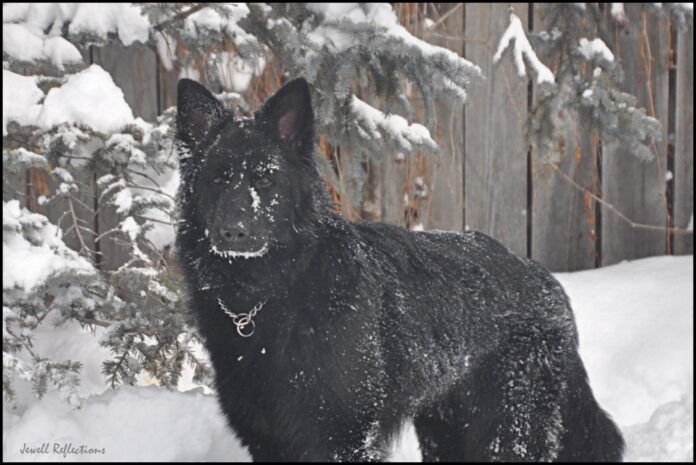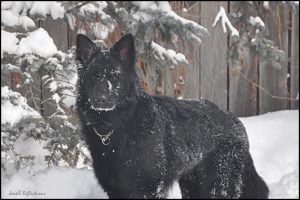
BY FRAN JEWELL

It’s winter. Yes, there are dogs that have extremely short coats that will, indeed, get cold. In all fairness, these dogs should be wearing a coat to keep them from getting frostbite. This morning, as I write this, it was 1 F in Hailey, with a wind chill of -14 F. Any dog left out for very long at this temperature is in danger of frostbite or hypothermia. My personal rule for my dogs is if the temperature is below 15 F, they don’t get to be outside to play longer than 15 minutes. It’s my 15/15 rule. My dogs, as you may know, have very thick and long coats and can handle many extremes in temperature. In the winter, these coats are just like heavy coats we would wear. For dogs with shorter coats, that rule should be modified.
What I see every day is so many dogs wearing clothing to look cute. I’ve seen hats that look like baby bonnets. I’ve seen heavy hats like a hunter would wear. I’ve even seen motorcycle hats and Santa hats. Then there are the coats, of all colors, heavy sheepskin and even raincoats. I’ve even seen dogs in baby carriages.
Putting clothes on dogs, especially little dogs, has become such a fad that the dog clothing industry has gone nuts with baby doll clothing and even Halloween costumes.
While many of these, indeed, fill a need for dogs that have been bred with short coats that live in cold climates, for the most part, dog clothing is inappropriate.
Why, you ask? It sure looks cute when they look like fur-babies! What we don’t realize is that dogs speak with their bodies, their ears, their eyes, and their tails. This is how they communicate with each other. When we put clothing on them, we essentially blind them to other dogs. Dogs cannot read each other’s signals. A dog whose ears are pinned back can mean the dog is angry or it can even mean a dog is being submissive to a higher-ranking dog. When a dog wears a hat, that communication is gone. Another dog can no longer read what the covered dog is saying or feeling.
What results can be a fight. Clothes can create long-term anxiety about other dogs, since the clothed dog cannot communicate and fears another attack. A dog that is wearing a jacket cannot show his hackles as a warning to another dog. Imagine if you couldn’t tell someone to leave you alone! A jacket too long can cover a dog’s tail, which most humans find to be an obvious communicator of happiness (wagging) or fear (tucked between its legs). Without those indicators, how can WE read our dog to keep it safe?
A dog in a baby carrier is literally captured, and unable to move around to signal to another dog that they are friendly or scared. It also elevates the dog. In the dog world, height generally means higher social rank. A conflict can be created if the dog in a baby carriage is not by nature a high-ranking dog, and another dog that is on the ground is indeed higher in social rank. A fight may ensue!
When we clothe our dogs, we see it as so cute when, in fact, it can make a dog feel vulnerable and defensive. This can also be true of small dogs that are carried all of the time.
Be fair to your dog. Let your dog use its communication skills to play and be happy. Don’t cover up your dog’s body language!
Fran Jewell is an Idaho Press Club award-winning columnist, IAABC-certified dog behavior consultant, NADOI-certified instructor #1096 and the owner of Positive Puppy Dog Training, LLC, in Sun Valley. For more information, visit positivepuppy.com or call (208) 578-1565.
